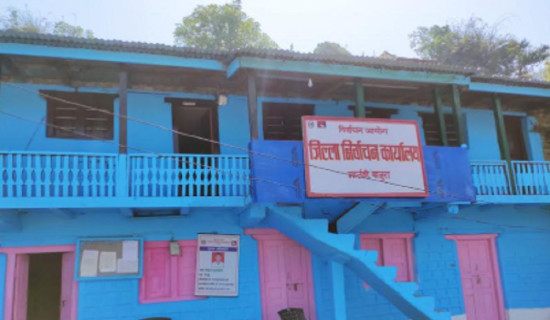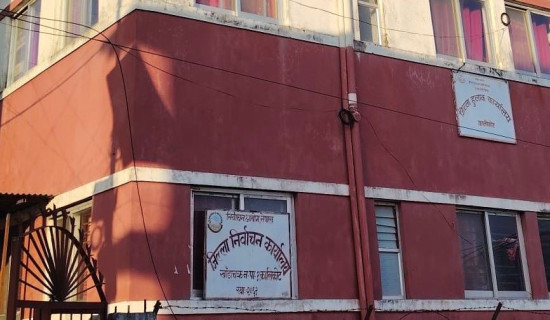- Friday, 21 November 2025
Saving Simians From Going Extinct
Devendra Gautam
August 08, 2022. A shrill cry of a creature pierces the woods, much to the shock of those wandering into the Shivapuri-Nagarjun National Park. Apparently, human mind is not quite ready for such sensory input so early in the morning. Of course, later in the day, a fast-atrophying world will take its toll on all of us.
A brief conversation with wizened wanderers reveals that the woe betide being sending out distress signals is not some mysterious creature native only to these woods. Rather, it is a simian! Why is it crying its heart out? Because the clan it belonged to (or so it thought) has abandoned it. Put yourself in the poor creature’s unenviable position. Without family and friends, there’s no life at all.
Showing those acrobatic skills together is so awesome (doing it all alone is such a killjoy). And so is huddling together during those cold mornings when columns of woods do not let the rays of the sun pass. So is raiding human settlements down below for edibles. Living all alone is fraught with risks. You never know when you will come under attack from fellow monkeys or natural enemies like dogs.
It’s not that living in a group shields you from all sorts of troubles in this wild world. When clan clashes take place, the most vulnerable members bear the severest brunt. Lactating mums and their babies come under increased threat when clans clash or monkeys pick up a fight with dogs. In urban jungles in particular, depletion of native, fruit-bearing trees and planting of non-native, non-fruiting trees has created food shortage conditions for the monkeys. Without enough berries and other fruits native to these woods, the simians in search of edibles venture into human settlements and come into direct conflict with humans.
The junk that humans throw the monkeys’ way – synthetic juice, biscuits, potato chips and what not – is also taking a toll. Add to it the bananas and other fruits cultivated through selective breeding. Intake of all these stuffs is taking a huge toll on the health of monkeys, making them more aggressive, says Professor Dr. Mukesh Chalise, internationally-renowned primatologist and wildlife biologist. These foods have also made monkeys sexually active at a younger than normal age, he observes.
Close contact with humans is risky for monkeys and vice-versa. Humans stand at risk of contracting simian immuno-deficiency virus through such contact. On the other hand, monkeys also stand at greater risk of contracting human viruses and diseases. Thanks to the intake of junk, among other factors, monkeys are reproducing at a younger age, but their lifespan has decreased and so has the quality of life, particularly in jungles located close to urban areas. These jungles have been sheltering far more number of monkeys than their carrying capacity.
With the mass exodus of youths into urban areas of Nepal and foreign shores, human population in villages has gone down significantly. As farms have shrunk for want of working hands, the woods have arrived at the doorsteps, literally. This means monkeys can enter human settlements far more easily than in the past, when villagers could easily scare away the intruders. Gone are the days when sighting of a monkey or two would become sensational news in the villages.
In the past, farmers used to raise cattle for dairy and for manure. With farms lying fallow, who bothers to raise cattle these days? Presence of young calves in the sheds used to draw the apex predator of the hills, the leopard. The predator used to hunt down the monkeys too, much to the relief of rural communities.
These days, with those sheds lying empty, the predator has vanished, leaving villages to the monkeys. Reports of increasing simian terror have ceased to be a new thing. Other wild animals like the deer, the boar and the percupine are also having a party in thinly-populated villages, but it is the monkey hogging the limelight! There have been instances of local communities picketing police posts demanding security from monkeys. In villages, security from monkeys has become a popular election agenda.
Preservation
Worryingly in the villages, with cowsheds lying empty, leopards have started pouncing upon humans, children in particular. All this comes at the time of euphoria over (almost) tripling of the tiger population in Nepal. Well and good if the country has the carrying capacity to sustain a tiger population of that size. Great if the food chain for Nepal’s apex predator is up and running.
Summing up, the onus is on the state to create and sustain an enabling environment where both humans and wildlife can survive and thrive without posing a serious threat to each other. Wildlife can’t give opinion, so the state would do well to create and sustain such an environment by holding serious consultations with relevant experts and host communities. Anyway, the time to act is now.
(Gautam is a freelancer.)












-original-thumb.jpg)
-original-thumb.jpg)


-original-thumb.jpg)